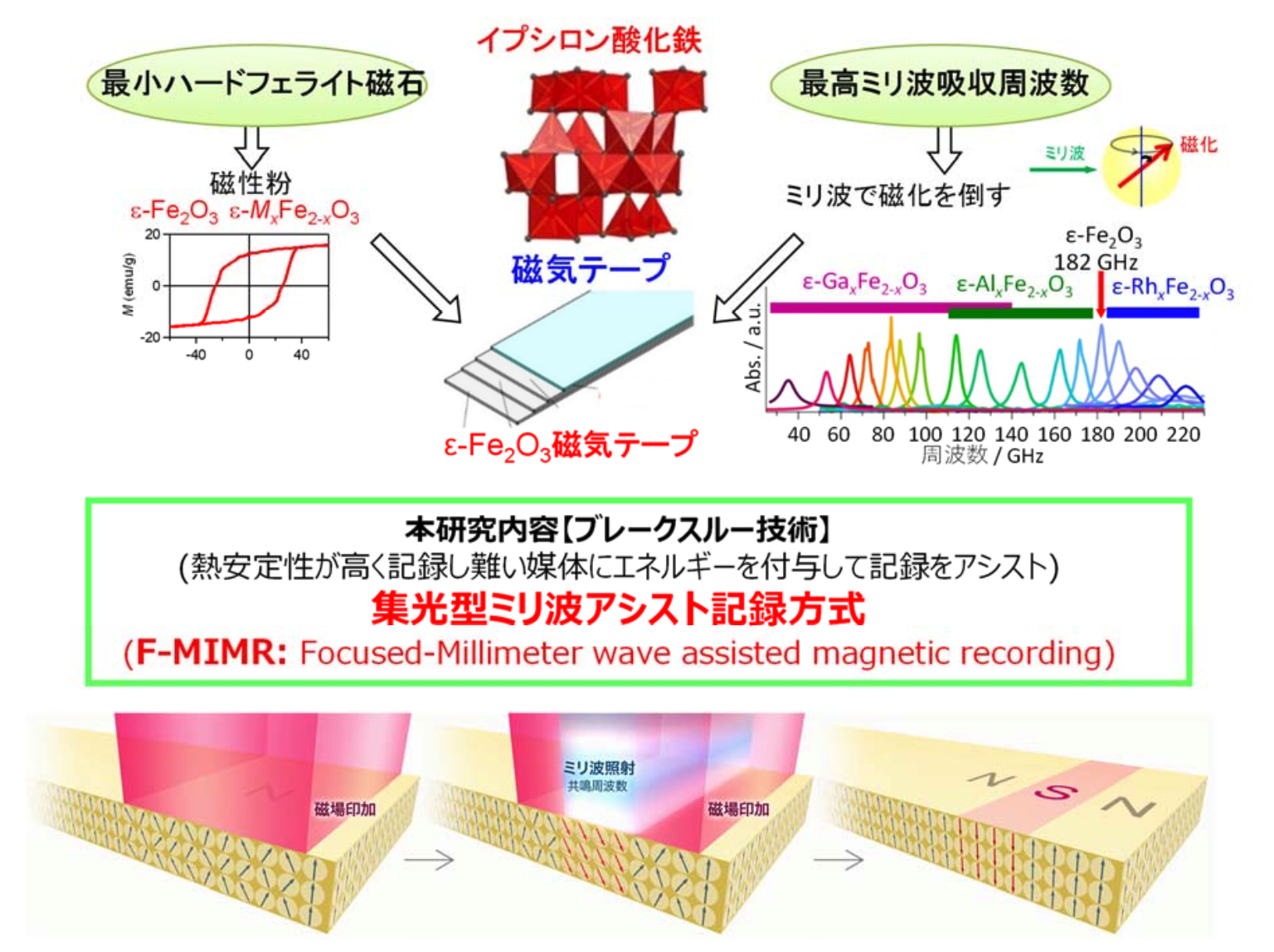
富士フイルム:新磁気記録方式を開発:ミリ波・テラヘルツ波(動画):
FUJIFILM: New magnetic recording method: Millimeter wave/terahertz wave:
富士胶片:开发了新的磁记录方法:毫米波/ Terrahertz波
東京大学
大阪大学レーザー科学研究所
富士フイルム記録メディア研究所
共同研究グループ:
ミリ波・テラヘルツ波を用いた新磁気記録方式「ミリ波磁気記録」の開発に成功。
現代社会は、ビッグデータとIoTの時代に突入。
データアーカイブは、その鍵の一つとなる基盤技術です。
磁気テープ:
- 長期記録保存の信頼性を有し、
- 省電力・低コストであるため、
- クラウドや業務用データアーカイブとして
活発に利用され、需要が伸びています。
集光型ミリ波アシスト磁気記録: F-MIMR
大越教授らは、ミリ波磁気記録の確立を目指しています。
「Focused Millimeter wave–assisted Magnetic Recording(F-MIMR)」という新手法を提案しました。
研究開発の概要:
イプシロン酸化鉄・磁性フィルムを開発:
Beyond 5G※2用ミリ波吸収材として注目されているイプシロン酸化鉄※3の磁性フィルムを作製しました。
集光型ミリ波発生装置を開発:
テラヘルツ(THz)光源を利用した集光型ミリ波発生装置を開発しました。
集光型ミリ波をフィルムに照射:
集光型ミリ波を、イプシロン酸化鉄磁性フィルムに照射します。
すると、磁極方向が反転し、書込みを確認することができました。
Beyond 5Gの磁気記録方式:
このF-MIMRは「Beyond 5Gの光・電磁波と磁気記録を組み合わせたもの」
Beyond 5G時代の画期的な磁気記録方式です。
磁気記録密度を著しく高めることが可能となります。
リソウ
https://resou.osaka-u.ac.jp/ja/research/2020/20201008_2
Magnetic‐Pole Flip by Millimeter Wave – Ohkoshi – – Advanced Materials
Abstract
In the era of Big Data and the Internet of Things, data archiving is a key technology.
From this viewpoint,
magnetic recordings
are drawing attention because they guarantee long‐term data storage.To archive an enormous amount of data, further increase of the recording density is necessary.
Herein a new magnetic recording methodology,
“focused‐millimeter‐wave‐assisted magnetic recording (F‐MIMR),” is proposed.
To test this methodology, magnetic films based on epsilon iron oxide nanoparticles
are prepared and a focused‐millimeter‐wave generator is constructed using terahertz (THz) light.
Irradiating the focused millimeter wave to epsilon iron oxide instantly switches its magnetic pole direction.The spin dynamics of F‐MIMR
are also calculated using the stochastic Landau–Lifshitz–Gilbert model considering all of the spins in an epsilon iron oxide nanoparticle.In F‐MIMR, the heat‐up effect of the recording media is expected to be suppressed.
Thus, F‐MIMR can be applied to high‐density magnetic recordings.
Wiley Online Library
https://onlinelibrary.wiley.com/doi/full/10.1002/adma.202004897